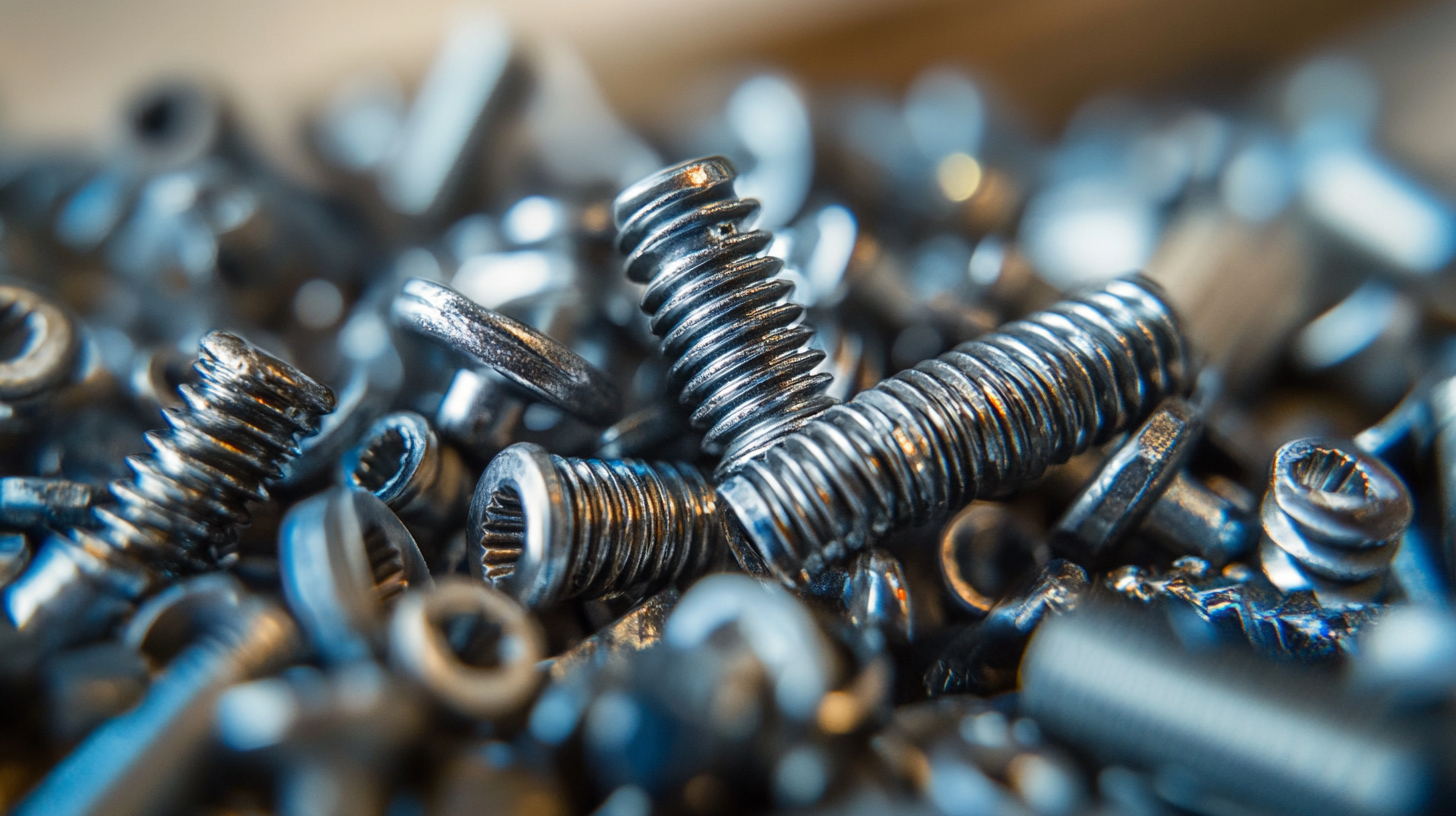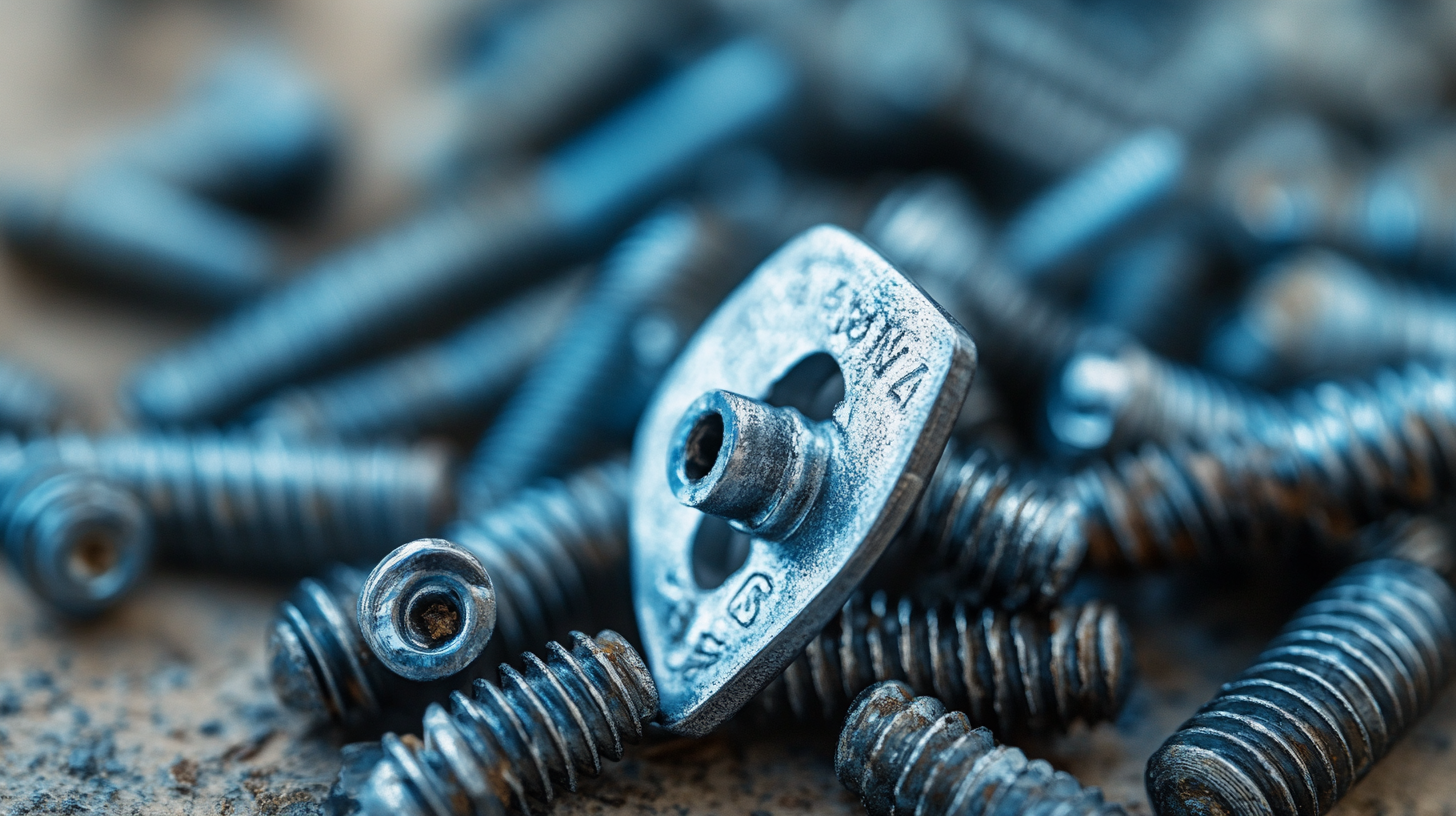
How to Choose the Best Stainless Steel Screws for Marine Applications: Real-World Success Stories
When it comes to marine applications, the choice of materials is critical to ensure durability and longevity in harsh environments. Stainless steel screws have emerged as a top choice for boat builders and marine engineers alike, thanks to their excellent corrosion resistance and structural integrity. According to a report by the National Association of Manufacturers, the marine industry is projected to grow at a CAGR of 3.8% from 2021 to 2026, which underscores the increasing demand for high-quality components like stainless steel screws. Furthermore, a study by the American Boat and Yacht Council indicates that up to 70% of maintenance issues in marine vessels can be traced back to the inadequate quality of fasteners. Understanding how to choose the best stainless steel screws is essential for ensuring the performance and safety of marine projects, and this blog will delve into real-world success stories to illustrate their critical role in the industry.

Understanding Marine Environments and Their Impact on Screw Selection
Choosing the right stainless steel screws for marine applications requires a thorough understanding of the unique challenges presented by marine environments. The corrosive nature of saltwater, coupled with factors such as temperature fluctuations and biofouling, significantly impacts the performance and longevity of fasteners. Selecting appropriate materials, such as marine-grade stainless steel, is crucial to mitigating these risks, ensuring durability and structural integrity in construction and maintenance projects.
Real-world success stories in the marine sector underscore the importance of adapting screw selection to specific environmental conditions. For instance, habitats that experience high levels of biofouling may require specially coated or designed screws that resist marine growth, minimizing maintenance needs and prolonging service life.
Furthermore, as studies highlight the impact of climate change on marine ecosystems, such as coral bleaching and shifts in species behavior, the need for reliable fastening solutions becomes even more pressing. Understanding these environmental dynamics will empower engineers and contractors to make informed decisions when choosing the best stainless steel screws, ultimately supporting the sustainability and resilience of marine infrastructure.
Key Characteristics of Stainless Steel Screws for Marine Use

When selecting stainless steel screws for marine applications, it's crucial to consider their key characteristics to ensure durability and performance in challenging environments. Marine-grade stainless steel, such as type 316, offers superior resistance to corrosion, which is essential for screws exposed to saltwater. These screws should also possess adequate strength and flexibility to withstand the vibrations and stresses that occur on boats or other marine structures.
Another important factor is the design of the screw head. Tricky screw heads with disappearing slots can complicate maintenance and repair efforts, so opting for easily accessible designs is advisable. Additionally, the screws should be compatible with various fasteners to enhance overall efficiency during assembly. By focusing on these characteristics, you can ensure that your marine applications remain secure and functional over time, ultimately safeguarding investments and enhancing safety on the water.
Real-World Examples: Successful Marine Applications Using Stainless Steel Screws
When it comes to marine applications, choosing the right stainless steel screws can greatly influence the longevity and reliability of your projects. One notable success story involves a coastal boat manufacturer that switched to high-grade stainless steel screws for their hull assembly. Previously plagued with frequent rust and corrosion issues, the manufacturer found that using marine-grade screws significantly reduced maintenance costs and increased customer satisfaction. These screws not only withstood harsh marine environments but also maintained their aesthetic appeal over time, showcasing the importance of quality materials in the boat-building process.
Another example can be seen in dock construction, where builders opted for stainless steel screws in both structural and decorative elements. These screws provided essential strength while resisting the corrosive effects of saltwater and humidity. One contractor reported that their use of premium stainless steel fasteners allowed them to extend warranty periods and offer clients peace of mind. The screws ensured that not only would the docks remain functional for years, but they also contributed to a visually appealing finish that attracted more patrons to the marina. These real-world applications underscore the critical role that stainless steel screws play in promoting durability and aesthetic value in marine settings.
Tips for Evaluating Corrosion Resistance in Marine Screws
When it comes to marine applications, choosing the right stainless steel screws is crucial due to the harsh environments they must withstand. Corrosion resistance is a top priority, as saltwater and humidity can quickly degrade inferior materials. To ensure you select the best screws for your project, consider the following tips.
First, evaluate the grade of stainless steel. Type 316 stainless steel is a popular choice for marine applications due to its excellent resistance to pitting and crevice corrosion. This grade contains molybdenum, which enhances its protective qualities against chlorides prevalent in marine settings. Always check the specifications before purchasing to confirm you are using the highest quality material.
Next, look for screws with protective coatings. Some manufacturers offer a range of coatings designed to enhance durability and resistance to corrosion, such as epoxy or PTFE. These coatings can provide an extra layer of protection against the corrosive marine environment, extending the life of your hardware significantly. Remember to balance the benefits of a coating with your project's specific needs, as some coatings may not adhere well in all circumstances.

Choosing the Right Screw Type for Different Marine Projects
When choosing stainless steel screws for marine applications, it's vital to consider the specific requirements of your project. Different marine environments can significantly impact the performance of various screw types. For instance, Type 316 stainless steel screws are highly regarded for their resistance to corrosion, especially in saltwater conditions, making them ideal for boat building and dock construction. According to a report by the American Boat and Yacht Council, using corrosion-resistant materials in marine applications can prevent premature failure, enhancing durability and reducing long-term costs.
Another critical factor is the screw type itself. Self-tapping screws are favored in situations where access is limited, especially when attaching parts to tough surfaces like fiberglass or hard plastics. In contrast, machine screws are often better suited for more robust structural connections. The Marine Industry Association notes that incorrect screw types can result in 30% more maintenance issues, emphasizing the importance of selecting the right fastener for each application. By focusing on material composition and screw type, marine project professionals can achieve both safety and efficacy in their installations.
How to Choose the Best Stainless Steel Screws for Marine Applications: Real-World Success Stories - Choosing the Right Screw Type for Different Marine Projects
| Project Type | Screw Type | Material | Corrosion Resistance | Length (inches) | Use Case Example |
|---|---|---|---|---|---|
| Boat Deck Installation | Towel Hook Screw | 316 Stainless Steel | Excellent | 1.5 | Holds towel hooks securely on deck. |
| Aquarium Stand Construction | Flat Head Screw | 304 Stainless Steel | Good | 2.0 | Used for securing frames to stands. |
| Sailing Yacht Repair | Self-Tapping Screw | A4 Stainless Steel | Exceptional | 1.25 | Repairing deck fittings that experience high stress. |
| Dock Construction | Lag Screw | 316 Stainless Steel | Excellent | 3.0 | Securing structural beams to the dock. |
| Jet Ski Storage Rack | Hex Head Screw | A2 Stainless Steel | Good | 1.75 | Holding the rack together in a humid environment. |
